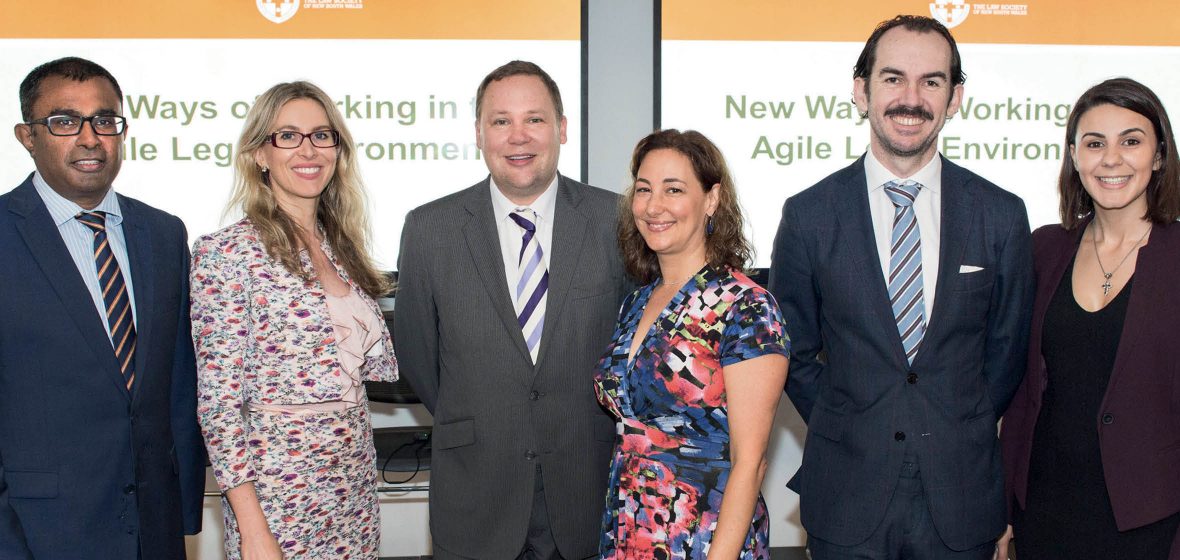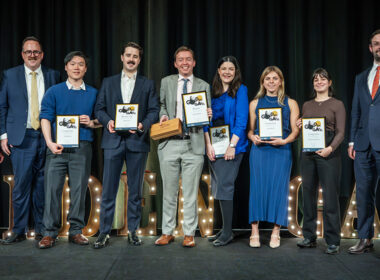Why is change hard?” This was the question Marina Chiovetti, the Portfolio Director of Digital Strategy and Capability in NSW Government’s Chief Digital Office, posed to an audience of about 120 lawyers at the Law Society of NSW on 29 November.
“Change is hard because we don’t choose it; it simply happens to us,” said Chiovetti, who has spent more than 15 years travelling the world touting the benefits of agile work processes to executives in professional services.
“Woolworths didn’t ask for Amazon to open up in Australia, but guess what – it happened. Work is changing because the world is changing.”
Chiovetti joined a panel of five “change instigators” in the legal profession who encouraged NSW lawyers to get over their fear of change and embrace the productivity and cost efficiencies that agile work technologies could offer.
The panel included Chris Savundra, the Chief Legal Officer at Australian Securities and Investments Commission (ASIC), Sam Nickless, a partner and Chief Operating Officer at Gilbert + Tobin, Chris D’Aeth, Executive Director and Principal Registrar at the Supreme Court of NSW, Paul McLachlan, a Sydney partner at McCullough Robertson, and Martina Ludvigova, Strategic Membership Officer at the Law Society of NSW.
Chiovetti explained that while work had once flowed in a “waterfall-like” descending pattern from managers to lower-grade employees, the digital revolution had enabled work to flow quickly both ways and for new ideas to pop up at any stage in the process. Open-plan workspaces, she said, could maximise the potential of this fluid, creative workflow by enabling lawyers to exchange ideas with colleagues sitting right next to them. However, she noted that trust was essential for teams moving to open-plan workspaces.
“Agile and flexible workspaces recognise that people can manage work on their own,” said Chiovetti. “The working day is no longer nine to five, and managers need to trust teams to do work when and how it suits them.”
Paul McLachlan from Sydney firm McCullough Robertson said lawyers at his firm found it easier than they first thought to transition to open-plan offices and “paper-less practice”.
“Desk size has shrunk, but screen size has expanded,” said McLachlan.
“Most lawyers I talk to are thrilled that they no longer need to sift through mountains of paper to find the part of a file they need – they can simply press Crtl + F to find what they were looking for.”
Chris D’Aeth, Executive Director and Principal Registrar at the Supreme Court of NSW, said he believed even the most traditional legal establishments – the courts – could adapt and benefit from agile technologies.
He pointed to a trial of paperless hearings, launched last year in the NSW Land and Environment Court, to show that this was the case. He also pre-emptively answered the question on every lawyer in the audience’s lips.
“Is the court ever going to go paperless?” he asked. “Well, at this stage, maybe less paper. Not quite paperless.”
New Ways of Working in the Agile Legal Environment was the first of a series of events the Law Society is organising to help lawyers prepare for the future of work, following recommendations from the 2016 Report on the Future of Law and Innovation in the Profession (FLIP).




